Recent Posts
Enhancing Home Safety and Value: Residential Roofing Services and Roof Replacement
4/22/2024 (Permalink)
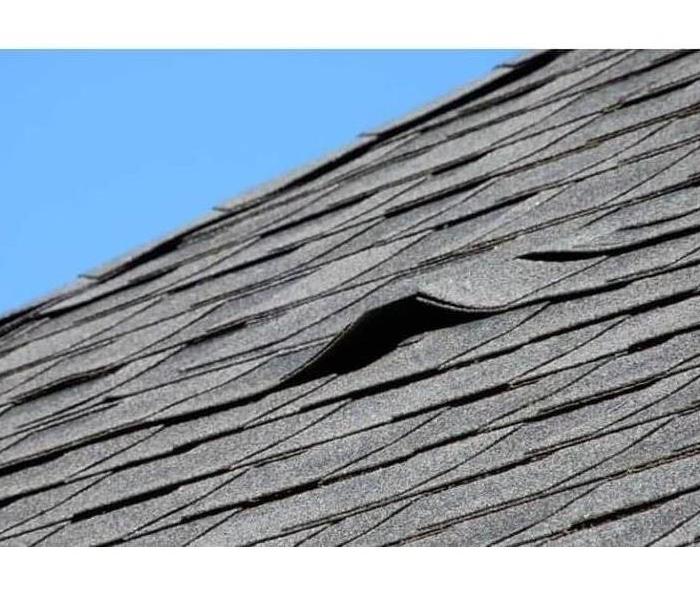 An asphalt shingled roof with lifting shingles caused by storm damage
An asphalt shingled roof with lifting shingles caused by storm damage
As homeowners, we often prioritize the maintenance and upkeep of our properties to ensure they remain safe, comfortable, and aesthetically pleasing. Among the various components of a home, the roof plays a critical role in protecting against the elements and maintaining structural integrity. At SERVPRO of Sioux Falls, we understand the importance of a well-maintained roof in preserving the value and longevity of your home. In this blog, we'll explore the significance of residential roofing services and roof replacement as essential building services for homeowners.
Your roof serves as the first line of defense against weather elements such as rain, snow, hail, and wind. Over time, exposure to these elements can lead to wear and tear, causing damage to shingles, flashing, and other roofing components. Regular maintenance and timely repairs are essential to keep your roof in optimal condition and prevent issues such as leaks, water damage, and structural compromise.
At SERVPRO of Sioux Falls, we offer comprehensive residential roofing services to address a wide range of issues:
- Roof Inspection: Our experienced technicians conduct thorough roof inspections to assess the condition of your roof and identify any signs of damage or deterioration. We examine the roofing materials, flashing, gutters, and other components to ensure they are functioning correctly and identify areas in need of repair or replacement.
- Roof Repair: From repairing damaged shingles and replacing worn-out flashing to addressing leaks and water damage, our team provides prompt and effective roof repair services to restore the integrity of your roof. We utilize high-quality materials and advanced techniques to ensure lasting results and protect your home from further damage.
- Storm Damage Restoration: Severe weather events such as storms, hail, and tornadoes can cause extensive damage to residential roofs. Our storm damage restoration services include emergency tarping, water extraction, and structural repairs to mitigate the effects of storm-related damage and restore your home to its preloss condition.
In some cases, roof repair may not be sufficient to address extensive damage or aging roofing materials. In such instances, roof replacement becomes necessary to ensure the long-term durability and functionality of your roof. Roof replacement offers several benefits for homeowners:
- Improved Safety and Protection: A new roof provides enhanced protection against leaks, water damage, and structural issues, improving the safety and security of your home and family.
- Increased Energy Efficiency: Modern roofing materials offer improved energy efficiency, helping to regulate indoor temperatures and reduce heating and cooling costs.
- Enhanced Curb Appeal and Value: A new roof enhances the aesthetic appeal of your home and increases its resale value, making it more attractive to potential buyers.
At SERVPRO of Sioux Falls, we specialize in expert roof replacement solutions tailored to your home's unique specifications and requirements. Our experienced roofing professionals work closely with you to select the right materials and execute the replacement process with precision and efficiency.
Your roof is an essential component of your home's structure, providing protection, comfort, and value. By investing in residential roofing services and roof replacement, you can ensure the long-term durability and functionality of your roof while enhancing the safety, comfort, and value of your home. At SERVPRO of Sioux Falls, we're here to help you safeguard your investment and enjoy peace of mind knowing your home is in good hands.
Call SERVPRO of Sioux Falls at 605-213-3303 to schedule an inspection of your roof and any related interior or exterior damage.
Restoring Peace of Mind: Residential Roofing Services and Roof Replacement After Storm Damage
4/17/2024 (Permalink)
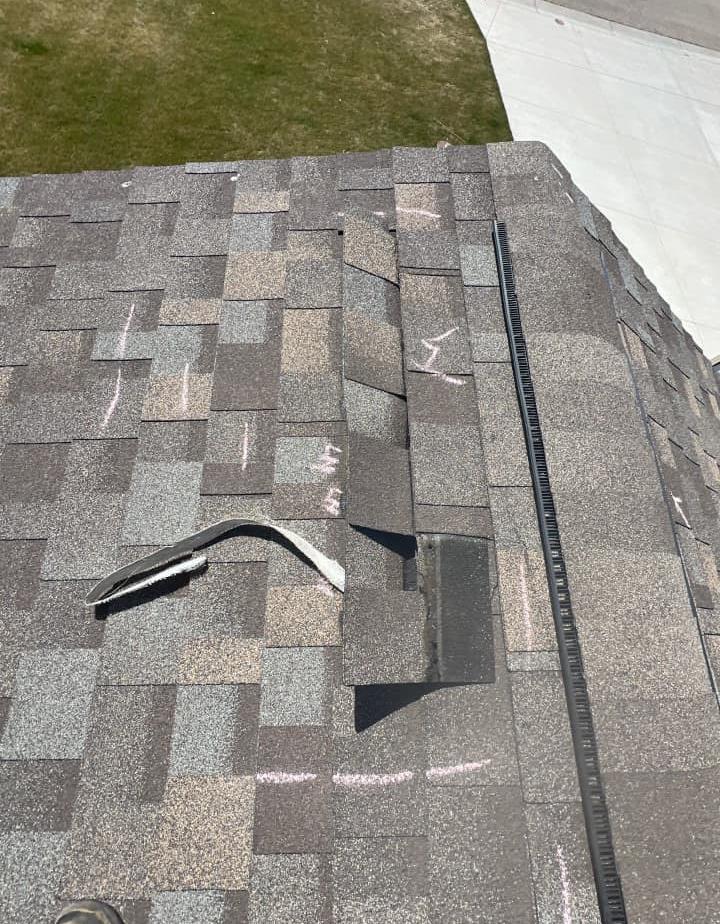 High winds in the Sioux Falls area have resulted in roofing replacement needs.
High winds in the Sioux Falls area have resulted in roofing replacement needs.
As homeowners, we often cherish the safety and security our roofs provide. However, when storms strike, they can wreak havoc on our properties, leaving behind a trail of damage and uncertainty. At SERVPRO of Sioux Falls, we understand the stress and frustration that come with storm-damaged roofs. That's why we're dedicated to providing comprehensive residential roofing services and expert roof replacement solutions to restore your peace of mind and protect your home.
Storms, whether they bring heavy rain, hail, or strong winds, can inflict significant damage to residential roofs. From missing shingles and leaks to structural issues, storm damage can compromise the integrity of your roof and jeopardize the safety of your home. It's crucial to address these issues promptly to prevent further damage and ensure the long-term durability of your roof.
At SERVPRO of Sioux Falls, we offer a wide range of residential roofing services tailored to meet your specific needs:
- Emergency Roof Tarping: In the aftermath of a storm, our team provides emergency roof tarping services to temporarily protect your home from further water intrusion and damage. This quick and effective solution helps mitigate immediate risks while we assess the extent of the damage.
- Water Damage Restoration: If your roof has suffered water damage due to storm-related leaks or flooding, our certified technicians utilize advanced water extraction, drying, and cleanup techniques to restore your property to its pre-damage condition. We work swiftly to prevent mold growth and structural issues caused by prolonged water exposure.
- Roof Inspection and Assessment: Our experienced roofing professionals conduct thorough inspections to assess the extent of storm damage and identify any underlying issues that may compromise the integrity of your roof. We provide detailed assessments and transparent recommendations to guide you through the restoration process.
- Roof Repair and Restoration: From repairing damaged shingles and flashing to addressing structural issues, we offer comprehensive roof repair services to restore the functionality and aesthetic appeal of your roof. Our goal is to ensure your roof is structurally sound and capable of withstanding future storms and adverse weather conditions.
In some cases, storm damage may be severe enough to warrant roof replacement. As your trusted restoration partner, SERVPRO of Sioux Falls offers expert roof replacement solutions tailored to your home's unique specifications and requirements. We work closely with you to select high-quality roofing materials and execute the replacement process with precision and efficiency. Our goal is to deliver a durable and long-lasting roofing solution that enhances the safety, comfort, and value of your home.
At SERVPRO of Sioux Falls, we understand the importance of a sturdy and reliable roof in safeguarding your home and family. When storms strike and damage occurs, you can count on us to provide prompt, professional, and dependable residential roofing services and roof replacement solutions. With our expertise, dedication, and commitment to excellence, we're here to restore your peace of mind and help you navigate the restoration process with confidence. Contact us today to learn more about how we can assist you with storm-damaged roof restoration and replacement. Our phone number is 605-213-3303.
Simple Management of Insurance Claims | SERVPRO of Sioux Falls
4/15/2024 (Permalink)
 SERVPRO of Sioux Falls is Here to Help® with your business' disaster recovery!
SERVPRO of Sioux Falls is Here to Help® with your business' disaster recovery!
In the midst of dealing with a disaster, there is a good chance your head will be swimming with thoughts. Most of them will likely be focused on the safety and well-being of your loved ones, with what kind of damage may have been done to your home coming in second.
As you try and sort through everything you have just endured, considering how and when to file an insurance claim may be far from your mind. You may not want to think about it, but the sooner you can get on the road to recovery, the better.
That is why our team is ready to take your call and start your restoration around the clock. We will handle all the things you may not have thought about and put everything back to normal fast.
Start Fast, Document OftenOne of the best ways to recover fast is to start restorations as soon as possible. The faster you are able to respond after a storm, fire, flood or other disaster, the less damage will be able to compound and worsen. Make sure to keep in mind your safety, though. Stay in a safe space until you know it is OK to venture out, and avoid downed power lines, flooded spaces or potential hot spots when you do.
If the entire community has been affected by the disaster, check on your neighbors and loved ones as soon as you can safely do so. Clear routes for emergency vehicles in order to get care for anyone in need. When you know everyone is safe, call our SERVPRO® office. We will start your recovery the moment we receive your call by taking plenty of information from you in order to put the team and equipment you need on the road to your property.
When you know our crew is headed your way, spend time walking your property. Take as many photos as you can of all the damage you see. If you need to clear a tree or limbs that have come down or turn water off that is actively flowing, make sure you take note of what you did. The more documentation you have, the easier your insurance claim process will be.
Leave It to Our TeamAs soon as our team gets there, we will start securing your home from the elements in order to prevent additional damages. While we tarp your roof or seal broken windows, we will also take a look at everything you have already documented in order to help you start your insurance claim process. Our team is highly trained in both disaster recovery of all kinds and insurance standards and requirements.
We will put together an itemized list of all of your losses, and add more photos to anything you have already taken. Our professionals are certified in insurance inspection standards, which means your claim process will be simple and successful. We also make it our goal to save as much of your property as possible through restoration techniques. The less you have to replace, the lower your recovery costs will be.
You can leave your complete recovery in the hands of our skilled crew. We will get things put back together fast, all while we walk you through everything that comes along with recovery—including the insurance claim process.
When a disaster strikes, call us to make your recovery process—insurance claims and all—simple.
All the Basics of Flood Prevention | SERVPRO of Sioux Falls
4/1/2024 (Permalink)
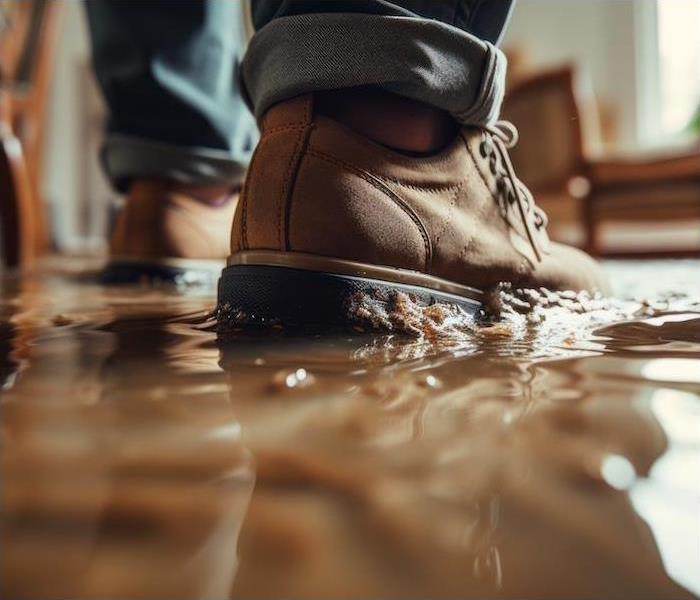 SERVPRO of Sioux Falls is ready to help in a moments notice after spring showers leak in to your home or business.
SERVPRO of Sioux Falls is ready to help in a moments notice after spring showers leak in to your home or business.
Going back to the basics is always the best way of getting something done well. Think about when you had to learn math—you always start with the most basic lesson and work toward harder concepts.
When it comes to natural disasters, starting with the basics is the best way to protect your home. There isn’t a whole lot we can do to control Mother Nature when she decides to show us how powerful she can be, but the more prepared we are, the safer things will stay.
One of the top ways homes are damaged every year is by flooding—which makes it one natural disaster we should always be prepared for.
Know Your ZoneWith so many water sources around us on a daily basis, flooding can happen in a number of ways. While they are not all from Mother Nature, internal, manmade disasters such as appliance leaks are often easier to recover from.
Weather-related flooding can be more challenging to deal with. With the Big Sioux River dominating so much of our community, river flooding, flash flooding and flooding from snow melt can be common and detrimental for all of us.
With so many risks, it is important you get to know your flood zone. Getting to know where your home and your community lies within floodplains is the best way to understand just how much preparation you will need to do in order to stay safe.
Take note of how your yard fares when a heavy rain comes through as well. If you are in a low-lying neighborhood, you may need to add additional drainage or lengthen your gutter system in order to prevent potential ponding water that could seep into your home.
If your community is in a heavily wooded area, make sure you clean your roof and gutters regularly. Adding covers to your gutter system might be a good upgrade in order to prevent potential water damage to your roof.
Prepare to PreventGetting to know the area around your home is a great first step toward protecting your home when water starts to get high, but there are few other things you can do. Some simple home maintenance on a regular basis can go a long way in keeping things safe.
The more you can help water move away from your home, the better, so start in your yard. Make sure there is gently sloping throughout, and keep an eye out for spots that stay wet after a heavy rain.
Add organic materials to these areas, or consider installing a water garden. These gardens use plants with deep roots that will pull water down into the soil and help keep things dry. Taking your gutter downspouts underground can be another helpful way to keep water moving steadily away from your house.
On the inside of your house, make sure any cracks or gaps are well-sealed. Check your basement, windows and doors, and replace caulking or weather stripping as needed. A sump pump can be particularly helpful when the river starts to get high, as it works to pull water out just as fast as it comes in.
Start with the basics to make flood protection simple for your home. Check your yard, roof and home monthly to keep water out. It will be much easier than trying to learn math.
Do you have water damage in your home? Contact us at SERVPRO® for fast recovery.
The Basics of Mold Prevention | SERVPRO of Sioux Falls
3/29/2024 (Permalink)
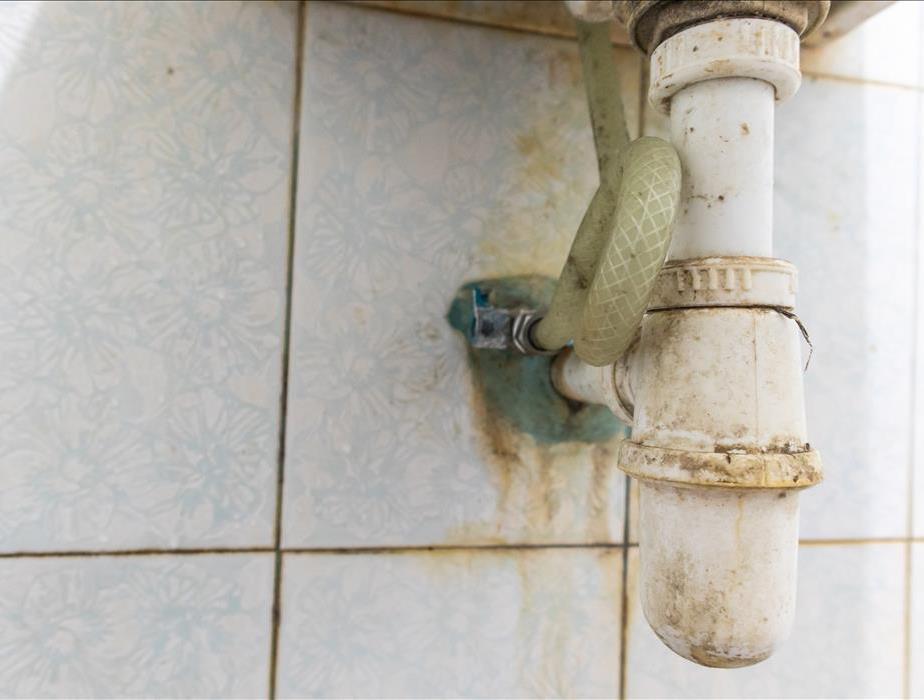 Are you dealing with a home mold invasion? No worries, SERVPRO of Sioux Falls in Here to Help®. Contact us today for a quick restoration.
Are you dealing with a home mold invasion? No worries, SERVPRO of Sioux Falls in Here to Help®. Contact us today for a quick restoration.
Mold is a naturally occurring substance that is part of every environment, but that doesn’t mean we want it in our homes. Beyond the basic ick factor that comes along with slimy, fuzzy green spots, mold can multiply incredibly fast and cause damage that go all the way to your foundation.
While some mold outbreaks can occur after a natural disaster strikes, leaving us very little time or opportunity to stop them, everyday mold growth and spread can be controlled in our home. Keeping mold in check is pretty simple, too.
Moisture Control
To thrive, mold only needs a little bit of moisture and an organic substance like wood or paper. Since your home is made up of the very organic substances mold likes to grow on, controlling the moisture in your home is key to preventing an outbreak.
Maintain a steady temperature during both the spring and the winter in order to keep your humidity level from getting too high. If you touch your wall and it feels damp, there is a musty odor in the air or your books all have curling edges, your home is too moist.
If keeping a close eye on your thermostat doesn’t seem to be enough, consider adding a dehumidifier to pull excess moisture out of the air. These can be particularly helpful in basements or garages.
Condensation on our windows can be a common problem in the spring when the days swing between warm and cold and the snow begins to melt. This condensation can creep in between walls or siding and allow for mold to form and spread. Check the seals on your windows every fall and spring to keep things tight, and dry up any moisture you do see as often as possible.
No Dripping Allowed
Maintaining the moisture in your entire home is a great approach to keeping things mold free, but there are some additional steps you will want to take in some mold hotspots around your house. The spots where mold commonly and quickly can start to take over include bathrooms and your kitchen.
Check under your sinks and around your toilets and showers weekly. This might sound like a lot, but the faster you can find and correct leaks, the less likely mold will form. A quick visual check might be enough, but if you do notice any moisture or smell a musty odor, run your hands along all your water lines. Make sure everything is tightly sealed, and replace any materials that have started to wear out.
Dry up spills and keep wet towels off the floor as another way to keep mold at bay. Make sure there is plenty of ventilation in both your kitchen and your bathrooms. Let bathroom fans run for 10–15 minutes extra after you are done showering to ensure things are getting as dry as possible.
With basic home maintenance, you can keep your home not only ick-free, but also damage-free. Don’t let mold move in on your space. Control the moisture and dry up the drips.
Have you discovered mold growing in your home? Contact us to get remediation handled fast.
Preventing Mold in the Kitchen | SERVPRO of Sioux Falls
3/22/2024 (Permalink)
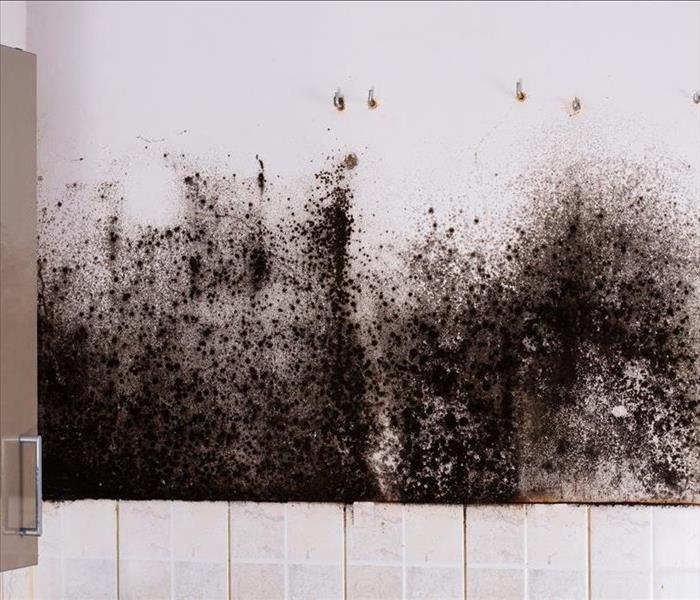 Are you under the distress of finding mold in your home? No worries, SERVPRO of Sioux Falls has your back. Call us today!
Are you under the distress of finding mold in your home? No worries, SERVPRO of Sioux Falls has your back. Call us today!
The kitchen is the heart of a home. If you have ever hosted a party and spent hours cleaning your living room, you know that it is inevitable that almost everyone in attendance will end up in the kitchen.
The kitchen is also one of the prime places that mold develops. Moisture from appliances and cooking makes it easy for mold to form and spread.
With some simple prevention steps, you can stop mold before it becomes a very unwelcome party guest in your kitchen.
Find It
In order to prevent potential mold growth, you have to first locate the places it is most likely to form and spread. It only takes 24–48 hours for a mold colony to start making your kitchen its home, so it’s crucial to regularly check and clean these spots.
Mold needs moisture, so anywhere that can be wet is the first place you should check. This includes under the sink, but don’t forget about appliances that use water. Weekly, check around your kitchen sink for potential water leaks. Run your hand along the pipes and other water lines to feel for drips.
Along with moisture, mold needs an organic material to grow, which means if it has started growing, the most likely place will be the wooden bottom or back of your cabinet. Keep an eye out for spots as a key indicator that there is a bigger issue.
Every three to six months, pull your refrigerator and dishwasher out to look for excess moisture or mold growth underneath them or behind them. Keep a close eye around your stove, too. Always use a hood vent when you cook in order to pull moisture out of your kitchen.
Prevent It
There are a few other ways to keep your kitchen protected along with putting the top places that mold can form on your regular cleaning list.
Keeping moisture under control will always be the best way to stop mold before it starts. If there is a window in your kitchen, open it when you cook—especially on days you are using multiple cooking devices.
Avoid clutter in the kitchen, and keep things clean. Cluttered counters can not only prevent seeing mold formation, they can also give moisture sneaky places to hide out. Put unused appliances away (make sure they are completely dry), and don’t forget to wipe down the backsplash daily.
Clean the trash can, too, and try to avoid throwing steamy foods out. Don’t put dishes away wet. It doesn’t take much moisture on a wooden cabinet to result in mold growth.
With regular maintenance and cleaning, you can prevent mold in your kitchen. Remember to allow for plenty of air flow when you cook, and if you do find spots, get remediation started with a single phone call to our office. We will get things taken care of so your kitchen can be the heart of your home again.
Are you concerned about mold growth in your kitchen? Contact us to get things assessed and remediated fast.
Sewage Leaks Will Always Stink | SERVPRO of Sioux Falls
3/15/2024 (Permalink)
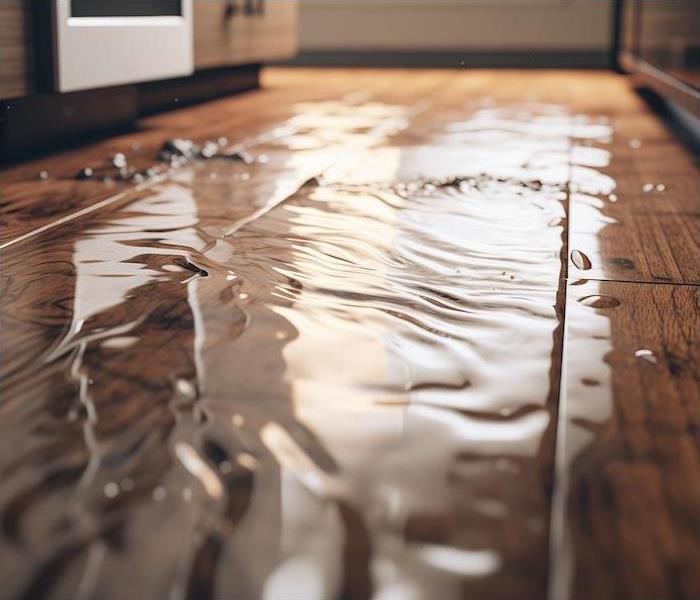 SERVPRO of Sioux Falls is always ready to respond to your call when biohazard incidents strike.
SERVPRO of Sioux Falls is always ready to respond to your call when biohazard incidents strike.
One thing that none of us ever want to deal with is finding a sewage leak in our home or business. It might not be the most extensive damage your space will ever see, but it will be a stinky, messy situation.
Sewage leaks are actually pretty common, and they can happen anywhere. Knowing how to handle them quickly is the best way to prevent a major disaster and keep yourself and your space safe (and a little less smelly).
What to Do FirstWhen there is a clog or other blockage in your sewer lines, wastewater will begin to head in the wrong direction and come back up through sinks, showers and tubs. Sewage leaks can also start when there is damage to your water line or sewage pipes.
Whatever caused your leak, make sure you stay away from it. There are three kinds of classifications that are used when flooding strikes, including white water, gray water and black water. White water and gray water stem from nontoxic sources, but black water is considered hazardous. Sewage leaks are classified as black water. This kind of leak contains viruses, bacteria and microbes that could negatively affect your health.
Steer clear of the actual leak, and cut the water off to your home or office. If you can safely do so, open windows around the area and turn on fans to help eliminate fumes. Secure the area so that no one else can access the leak. If the leak has happened in your home, make sure any pets are kept safely away from the leak.
Where SERVPRO® Comes InAt SERVPRO, our team is trained and certified in restoring and cleaning after a biohazard leak has occurred. From the moment you call us, we will gather as much information as possible while we simultaneously start putting together a team and the proper equipment to handle your recovery.
As you wait for our team to arrive, spend some time taking photos of the affected area. This might not be fun to photograph, but the more images you can get, the easier any claims you file with insurance will go. These pictures can also help us identify what has caused the leak in order to take the fastest approach to correcting it.
When our team does get to your property, we will start by seeking out the source of the problem while we also begin removing standing sewage and water. Remember that we are dealing with biohazard situation. Our team will be protected with the proper safety gear, but you will need to stay away as much as possible until things are safer.
Your restoration will include deep-cleaning and the repair of any physical damage that was done during the leak. We will also fully sanitize the space and address any odors that are hanging around. Using deodorizers and ventilation, we will make sure that smells are completely gone and your space is fully yours again.
If sewage starts backing up in your space, call us. We will handle cleaning up the mess and getting everything back to normal fast.
Sewage leaks should always be cleaned up by professionals. Call SERVPRO, and we will take care of you.
Be Alert for Spring Storms | SERVPRO of Sioux Falls
3/1/2024 (Permalink)
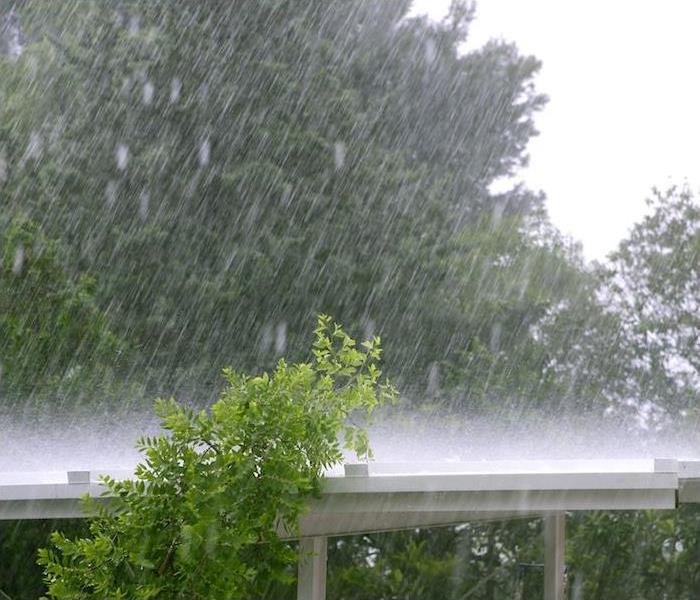 Let SERVPRO of Sioux Falls help you get from April showers to May flowers.
Let SERVPRO of Sioux Falls help you get from April showers to May flowers.
Even though our winters can often feel like they last forever, spring does eventually arrive. As the temperatures start to improve and the snow starts to melt, storms become more frequent—and more dangerous.
The further into spring we get, the stronger storms can become. Flooding is a common issue, too, especially as more and more snow melts away and heavy rains start to fall. Thunderstorms and high winds can’t be ruled out either.
With such potential for volatile weather, it is crucial that we are prepared for anything. One of the most important parts of being prepared is receiving weather alerts as fast as possible.
The Power of the InternetIn our hyperconnected society, it’s likely that there is a screen near you at all times. That makes our phones, tablets and other internet-based devices the perfect place to get forecasts and weather alerts. There are Wireless Emergency Alerts that will come to your phone for a variety of situations, but you can also opt to download several apps that can send notifications.
When you are choosing an app, make sure it is a nationally recognized organization or a local organization in order to get the most accurate information. Local news stations often have an app you can use to get notifications for more than just weather. Make sure to sign up for the city alerts, too—these can keep you up to date on lots of things going on around town.
If a storm or flood is headed your way, make sure you don’t rely on alerts alone. Watch local news stations so you can stay ahead of evacuation orders and shelters opening as well.
Non-Electronic OptionsOur phones, tablets and other devices are great tools for keeping us safe, but they all have batteries that will eventually die. It is important to have another way to receive weather notifications and other alerts that does not require electricity. Storms can quickly knock out power long-term, and you need to stay informed in order to stay safe.
If you can hear the town’s emergency sirens, make sure you know the different sounds they make so that you can respond appropriately and shelter as needed. It is also a good idea to invest in an NOAA weather radio. These are generally run with a hand-crank or with solar-power and can be taken with you wherever you go.
Keep your weather radio on even after a storm has moved away. Severe weather can come in multiple rounds, and you need to be prepared to head back to shelter quickly.
Even when you are ultimately prepared for anything, you may still end up with damage after a flood or severe thunderstorm rolls through town. Call us right away, and we will start your restoration. We are available day or night to get your home put back together fast.
Serious storms can cause serious property damage. Call SERVPRO® 24⁄7 for immediate restoration assistance.
Preventing Mold in the Kitchen | SERVPRO of Sioux Falls
3/1/2024 (Permalink)
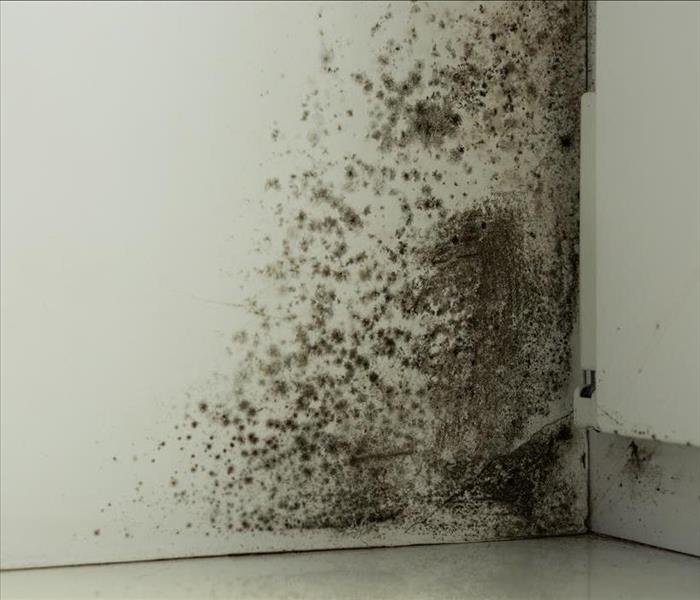 SERVPRO of Sioux Falls is Here to Help® when you have a mold emergency on your property.
SERVPRO of Sioux Falls is Here to Help® when you have a mold emergency on your property.
The kitchen is the heart of a home. If you have ever hosted a party and spent hours cleaning your living room, you know that it is inevitable that almost everyone in attendance will end up in the kitchen.
The kitchen is also one of the prime places that mold develops. Moisture from appliances and cooking makes it easy for mold to form and spread.
With some simple prevention steps, you can stop mold before it becomes a very unwelcome party guest in your kitchen.
Find It
In order to prevent potential mold growth, you have to first locate the places it is most likely to form and spread. It only takes 24–48 hours for a mold colony to start making your kitchen its home, so it’s crucial to regularly check and clean these spots.
Mold needs moisture, so anywhere that can be wet is the first place you should check. This includes under the sink, but don’t forget about appliances that use water. Weekly, check around your kitchen sink for potential water leaks. Run your hand along the pipes and other water lines to feel for drips.
Along with moisture, mold needs an organic material to grow, which means if it has started growing, the most likely place will be the wooden bottom or back of your cabinet. Keep an eye out for spots as a key indicator that there is a bigger issue.
Every three to six months, pull your refrigerator and dishwasher out to look for excess moisture or mold growth underneath them or behind them. Keep a close eye around your stove, too. Always use a hood vent when you cook in order to pull moisture out of your kitchen.
Prevent It
There are a few other ways to keep your kitchen protected along with putting the top places that mold can form on your regular cleaning list.
Keeping moisture under control will always be the best way to stop mold before it starts. If there is a window in your kitchen, open it when you cook—especially on days you are using multiple cooking devices.
Avoid clutter in the kitchen, and keep things clean. Cluttered counters can not only prevent seeing mold formation, they can also give moisture sneaky places to hide out. Put unused appliances away (make sure they are completely dry), and don’t forget to wipe down the backsplash daily.
Clean the trash can, too, and try to avoid throwing steamy foods out. Don’t put dishes away wet. It doesn’t take much moisture on a wooden cabinet to result in mold growth.
With regular maintenance and cleaning, you can prevent mold in your kitchen. Remember to allow for plenty of air flow when you cook, and if you do find spots, get remediation started with a single phone call to our office. We will get things taken care of so your kitchen can be the heart of your home again.
Are you concerned about mold growth in your kitchen? Contact us to get things assessed and remediated fast.
When You Have to Deal With a Disaster | SERVPRO of Sioux Falls
2/16/2024 (Permalink)
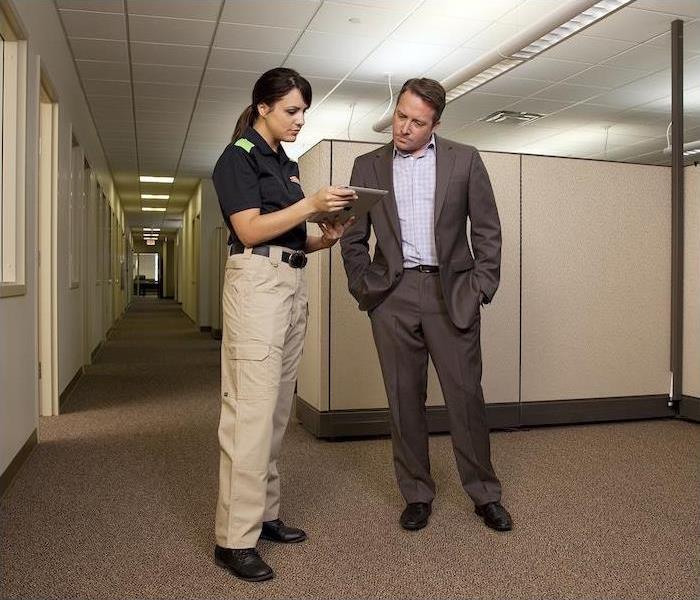 SERVPRO of Sioux Falls is here for your business every step of the way, from ERPs to disaster recovery.
SERVPRO of Sioux Falls is here for your business every step of the way, from ERPs to disaster recovery.
Damage from a disaster can feel pretty overwhelming. Your home, your office and your entire community could be affected, leaving your head spinning as you try and figure out how to take the next step.
When a disaster does strike, getting our homes put back together will always take top priority, but when you are a small business owner, getting back to work can be just as important. The good news is that with some preparation and a little help from our team at SERVPRO of Sioux Falls, your life will be back on track before you know it.
Prepare Ahead of TimeIn order to recover quickly after a disaster, you need a plan before one ever strikes. With a well-rehearsed emergency strategy, you and your team can keep work going no matter what comes your way.
When it comes to making a plan for disasters, communication is key. Your emergency strategy should be a regular part of staff training so that everyone knows exactly how to respond before, during and after an event occurs.
Every few months, spend time walking your building to locate water shut-off valves and fire extinguishers. Make sure exit routes are clear of any blockages and well-marked. Talk to your staff about who should handle securing parts of your building when a disaster is predicted to be heading your way.
After a disaster, make sure your employees know how to get back to work. Lay out expectations clearly, and continue to stay in constant contact to keep up with everyone’s situations. If you are working remotely, make sure secure networks and equipment are ready to go before the event happens.
If you plan on getting back to work in a different physical location, make sure keys are handed out to the right people and everyone knows when and where to report. Plan on using multiple forms of communications—some networks could be down long term after a large scale event.
Recover QuicklyHaving a plan can take some of the panic and concern out of dealing with a disaster. When you have enacted a well-practiced plan, you know your business is already on the road to recovery well ahead of any damage occurring. Contact SERVPRO® the moment it is safe to do so—we are available to respond around the clock in order to start recovery.
While we begin to handle damage at your physical location, you can start communicating with your customers. Make sure you share your story on multiple platforms in order to keep as much of your community up to date as possible.
Throughout recovery, do your best to keep an open mind. You will need to be flexible about how you operate for a while as we work around the clock to get things dried, sanitized and rebuilt. Keep in mind this new normal isn’t forever.
Prepare your business for a disaster long before it ever strikes, and create strong lines of communication with your employees and your customers. With a good plan and a total restoration team like ours right around the corner, you will be back to work faster than you ever thought possible.
Has your business experienced a disaster, or do you want help building an emergency plan? Contact us to find everything you need.






 24/7 Emergency Service
24/7 Emergency Service









